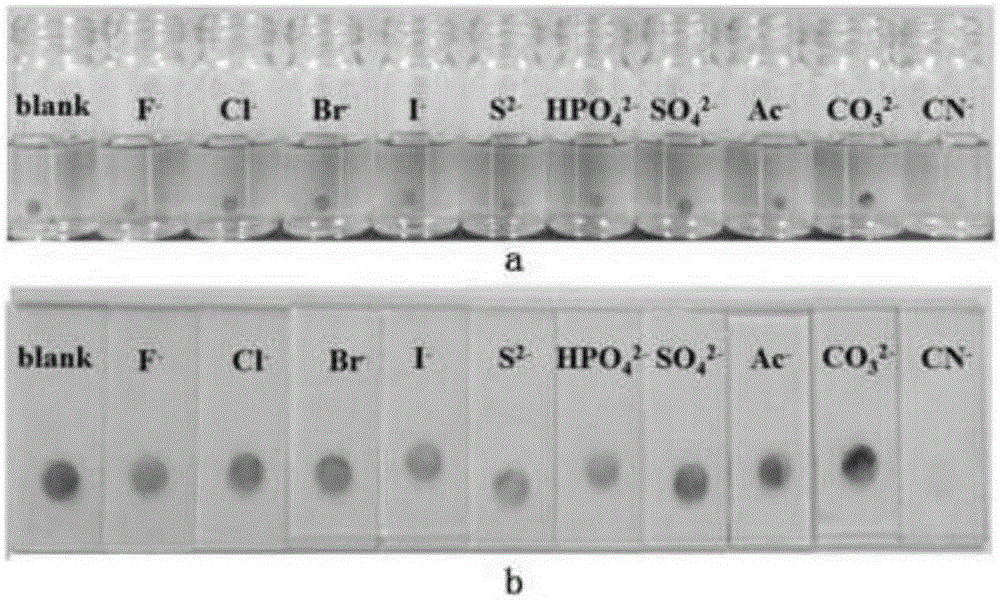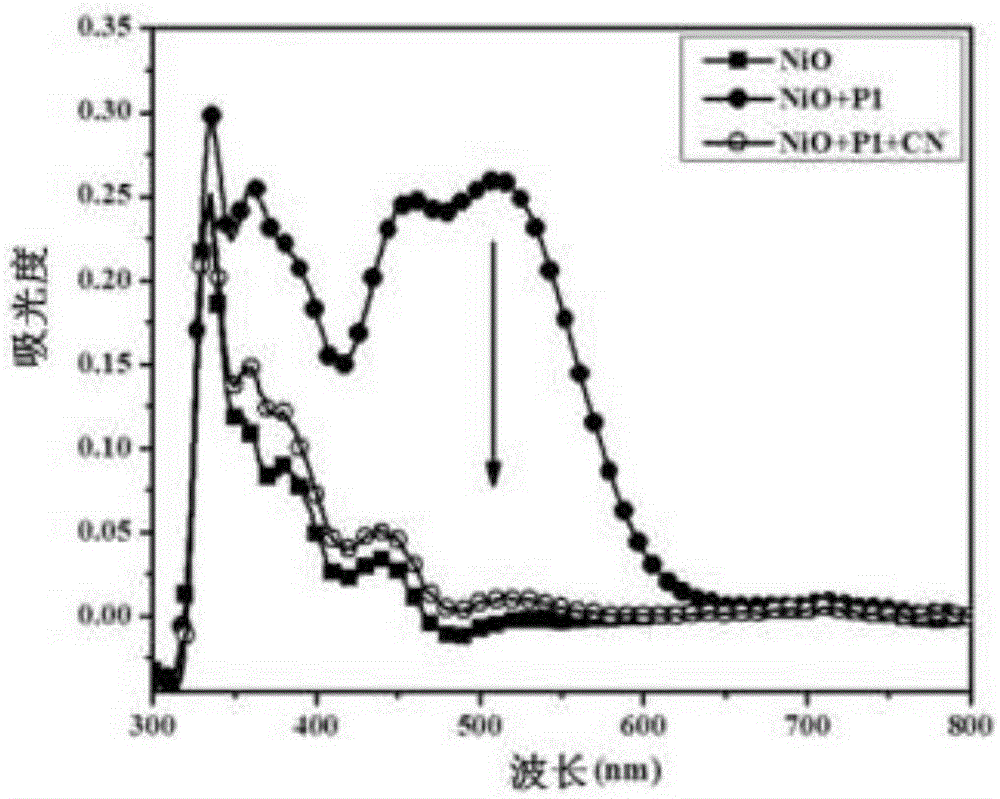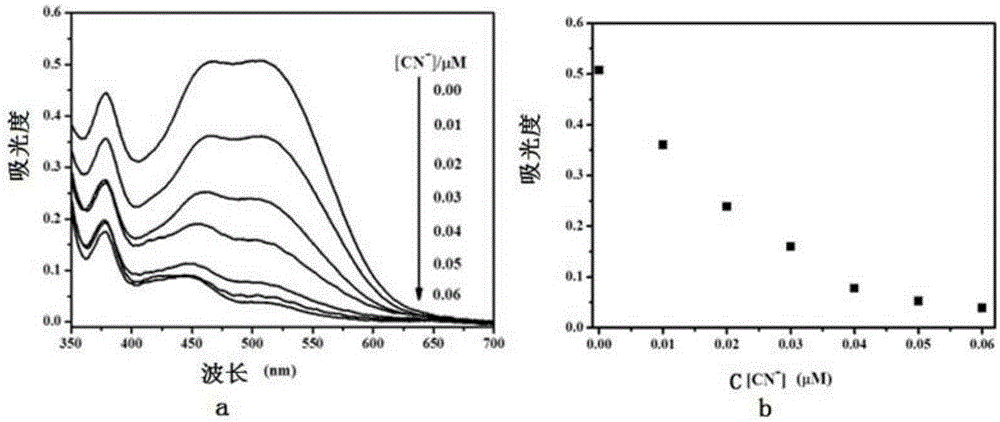Monomolecular-layer probe for detecting cyanide ion and preparation and application methods thereof
A monomolecular probe, monomolecular layer technology, applied in material analysis by observing the influence of chemical indicators, and analysis by chemical reaction of materials, etc., can solve the complex preparation and characterization process, and the insoluble organic compounds. or insoluble, difficult to operate and other problems, to achieve the effect of low cost, high sensitivity and high specificity
- Summary
- Abstract
- Description
- Claims
- Application Information
AI Technical Summary
Problems solved by technology
Method used
Image
Examples
Embodiment 1
[0031] Embodiment 1 metal oxide is NiO
[0032] 1) Scrape-coat the nickel chloride slurry on the substrate (transparent glass), and after the solvent evaporates, sinter at 450°C for 30 minutes to obtain a NiO film;
[0033] 2) Soak 11 pieces of glass sheets with NiO films dried in step 1) into an ethanol solution containing 0.1mmol / LP1, soak for 1 minute at a temperature of 21-25°C, take them out, wash them with chloroform, blow dry, to obtain a NiO thin film adsorbed with a certain amount of probe molecule P1;
[0034] 3) Weigh 0.42mgNaF, 0.58mgNaCl, 1.19mgKBr, 1.66mgKI, 0.78mgNa 2 S, 1.42mgNa 2 HPO 4 , 1.42mgNa 2 SO 4 , 1.06mgNa 2 CO 3 , 0.82mgCH 3 COONa, 2.68 mg (C 4 h 9 ) 4 N + CN - Dissolve in 1mL mixed solution (ethanol:PBS=2:3) to obtain a concentration of 10 -2 mol / L solution, and then take 100μL to dilute to 10mL for later use;
[0035] 4) Immerse the NiO film obtained in step 2) and adsorbed the monomolecular layer P1 in various anion solutions obtaine...
Embodiment 2
[0041] Embodiment 2 metal oxide is TiO 2
[0042] 1) TiO with sizes of 20nm, 200nm, and 400nm were respectively 2 The nanoparticle slurry is drip-coated on the substrate (transparent conductive glass), and after the solvent is volatilized, it is sintered at 450°C for 30 minutes to obtain TiO 2 film;
[0043] 2) The TiO with a size of 20nm prepared in step 1) 2 Take 11 pieces of the film and soak them in 0.1mM P1 ethanol solution, soak them for 1 minute at room temperature, take them out, wash them with chloroform, and dry them to get TiO2 adsorbed with a certain amount of probe molecules P1. 2 film sheet;
[0044] 3) Weigh 0.42mgNaF, 0.58mgNaCl, 1.19mgKBr, 1.66mgKI, 0.78mgNa 2 S, 1.42mgNa 2 HPO 4 , 1.42mgNa 2 SO 4 , 1.06mgNa 2 CO 3 , 0.82mgCH 3 COONa, 2.68 mg (C 4 h 9 ) 4 N + CN - Dissolve in 1mL mixed solution (ethanol:PBS=2:3) to obtain a concentration of 10 -2 mol / L solution, and then take 100 μL to dilute to 10mL for later use; 2 Thin film is immersed in...
PUM
 Login to View More
Login to View More Abstract
Description
Claims
Application Information
 Login to View More
Login to View More - R&D
- Intellectual Property
- Life Sciences
- Materials
- Tech Scout
- Unparalleled Data Quality
- Higher Quality Content
- 60% Fewer Hallucinations
Browse by: Latest US Patents, China's latest patents, Technical Efficacy Thesaurus, Application Domain, Technology Topic, Popular Technical Reports.
© 2025 PatSnap. All rights reserved.Legal|Privacy policy|Modern Slavery Act Transparency Statement|Sitemap|About US| Contact US: help@patsnap.com



